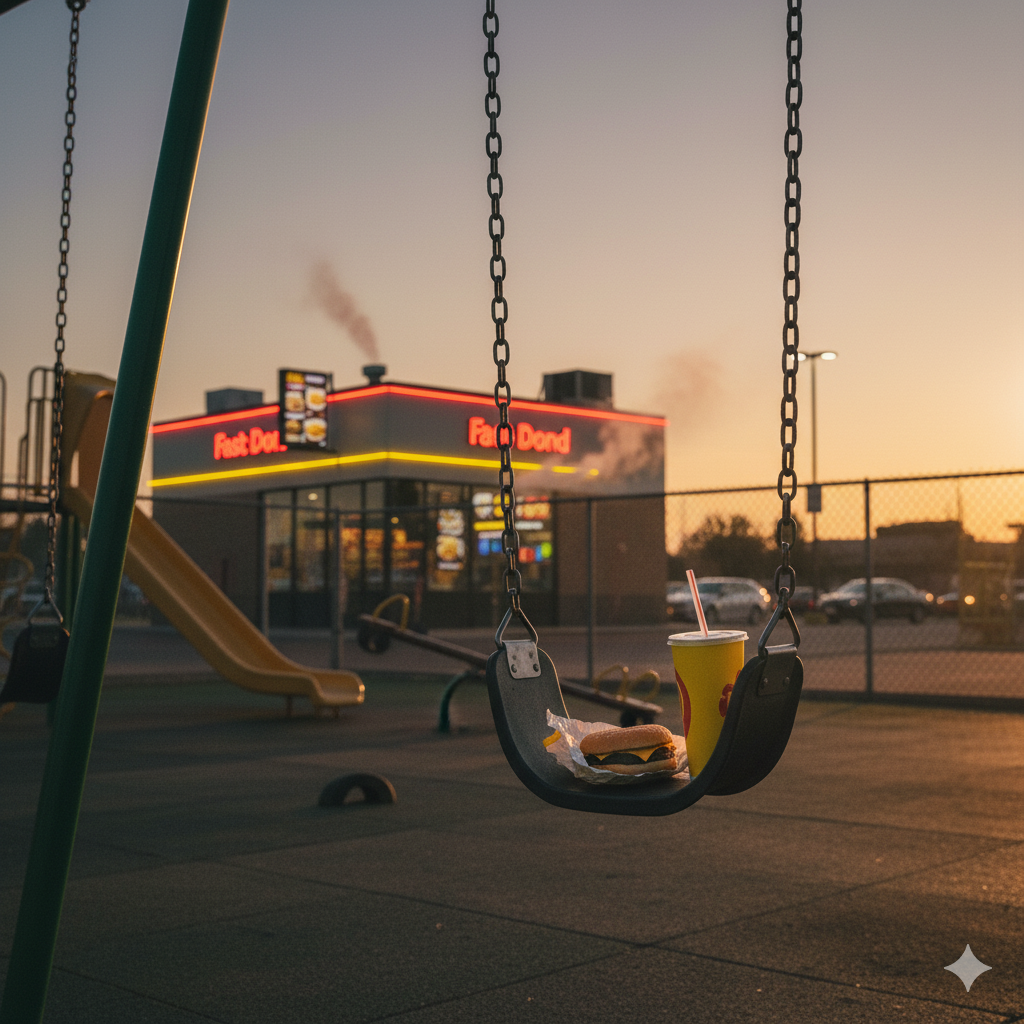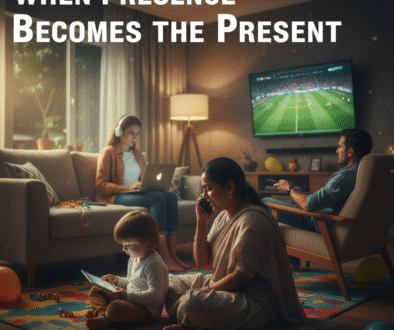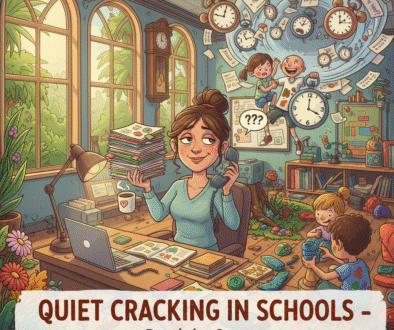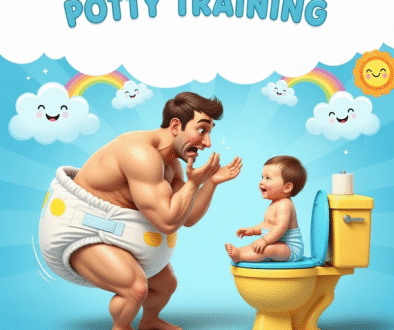The Silent Pandemic

Beautifully Packed, Quietly Poisoned
The Silent Pandemic. Killing Childhood with Food
I wasn’t planning to write this.
Honestly, I just watched a short commercial — a small clip that called this whole mess “the silent pandemic.”
And suddenly, it hit me.
I sat there thinking, I’ve known this… deep down I knew it.
But I wasn’t panicking about it.
Not like I should have been.
Maybe because it’s one of those truths that hide in plain sight.
You see it, but you don’t look.
It’s Not Just About Junk Food
This is about kids.
Our kids.
The ones who are quietly being reprogrammed by what’s on their plates — all the bright colors, cute boxes, cartoon mascots, “healthy” labels, and promises of “vitamins.”
It’s a whole world built to make us believe we’re feeding them something good enough.
But let’s be honest — most of it is chemistry, not food.
Corporate-designed products — engineered for addiction.
Filled with sugars, taste enhancers, and synthetic “happiness” flavors that make their little brains light up for five minutes and then crash into irritability, sadness, and exhaustion.
No one talks about this enough:
These chemicals don’t just fill stomachs — they mess with mood, motivation, sleep, and emotional regulation.
We’re raising a generation that’s not just overweight — they’re tired, anxious, and disconnected.
And yes, scientists are saying it now — clearly, coldly — today’s parents may outlive their children.
And that’s a sentence that should freeze every mother and father in place.
The Everyday Traps We Don’t See
It’s not just burgers and fries. Oh no, it’s subtler than that.
Take a simple juice in a beautiful carton or glass bottle. Bright, cheerful label. “No added sugar.” Looks innocent.
But check the ingredients — preservatives, stabilizers, maybe even flavor enhancers. And parents think: It’s fruit, it’s fine.
Why not squeeze fresh fruit at home? Because it’s “too much work.”
Because life is simple, and the kid wants juice now.
Or Maggi noodles — oh, the ultimate comfort in India. You can toss in vegetables, cook it fast, feel clever.
But let’s be honest: it’s still processed, still loaded with chemicals, still not real nutrition.
We modify it to feel good about it, but are we cheating ourselves — and our children?
And then the biscuits, cereals, chocolate spreads, honey-sweetened granola — everything sold as “fun” or “healthy breakfast.”
Sugar, sugar, sugar. The child loves it, parents don’t refuse, life is convenient, life is easy.
But inside, every spoonful is quietly rewiring taste buds, altering moods, and setting up lifelong cravings.
This is the silent part of the pandemic.
It’s hidden in the little decisions we make every morning, every lunchbox, every snack.
I Grew Up Differently
We ran.
We climbed trees.
We scraped our knees, hung upside down on monkey bars until the blood rushed to our heads, and then we laughed like lunatics.
We didn’t have “right shoes for running.”
We didn’t have hand sanitizer in our pockets.
We had dirt, bruises, and a childhood.
Now, what do I see?
PE lessons that became optional — as if movement is a hobby, not survival.
A teacher telling kids, “Do what you want.”
A parent sending a medical note because their child sneezed.
A school terrified that a child might fall, might sweat, might — God forbid — get a scratch.
And so we’ve created this sterile, padded version of life.
No running, no falling, no risk, no fun.
And what’s left is a generation that doesn’t know how to use its body.
My Own Kids and the Golden Arches
Yes, my kids also loved McDonald’s.
How could they not? It’s designed for that — the smells, the lights, the little plastic toys.
And to be fair — I sometimes let them.
But there was balance.
Always balance.
There were fruits, vegetables, home-cooked things.
They grew up knowing that food isn’t a reward — it’s what keeps you alive and sane.
That doesn’t mean I was a perfect parent — no one is.
But I was aware.
And that awareness is everything.
I did some research, read what scientists say, and this is what I came to understand — in simple words I could actually make sense of, because all those medical chapters are way too technical. And honestly, if this isn’t alarming, I don’t know what is.
What’s Not Developing — And Why It’s Dangerous
It’s not just about fat or sugar crashes. Kids today aren’t developing the way they should.
Physically: Their muscles, bones, and stamina aren’t getting the natural workout they need. Easy snacks, sedentary games, and optional PE mean children don’t build strength, coordination, or resilience. Falling hurts more than it should, climbing feels harder, balance is shaky — all because their bodies aren’t challenged the way they were in a real childhood.
Mentally and emotionally: The constant sugar spikes, flavor chemicals, and instant gratification rewire the brain. Kids struggle to focus, handle frustration, or manage emotions. Mood swings, irritability, anxiety, and stress become normal — not because of their personalities, but because their brains are being trained to crave pleasure, avoid effort, and respond to chemicals rather than real food.
The killer part: This combination is silent. Slow. Invisible. Kids are tired, stressed, overweight, anxious — and we shrug, thinking it’s normal. But over time, it shortens life expectancy, lowers resilience, and sets the stage for chronic disease and emotional challenges.
Additives and flavor enhancers are not harmless. They manipulate cravings, make real food boring, and condition children to prefer chemicals over nutrition. It’s like teaching them the wrong alphabet: they learn it perfectly, but it won’t help them read the real world.
In short: kids aren’t just eating poorly — their bodies, brains, and emotions are being quietly stunted. And that’s what makes this a real pandemic, not a fad.
The Grieving Generation
What breaks me most is that this whole crisis is invisible.
It’s happening behind closed doors — in lunchboxes, in school cafeterias, in every “just one treat” we hand out to keep peace.
We’ve normalized poison in small doses.
We call it snacks.
And now, we are the first generation in history that might have to watch our children die before us — not because of war, but because of what’s in their food.
That’s not a future — that’s a tragedy we’re funding with our grocery bills.
Why I’m Speaking Loudly Now
Because silence is too comfortable.
And comfort is killing us.
We’ve become so afraid of truth that we’d rather scroll past it, pretend it’s “not that bad,” and call it parenting.
But it is that bad.
And if we don’t speak, if we don’t start demanding better food, better movement, better awareness — then who will?
This isn’t about blaming parents.
It’s about shaking the system awake.
The corporations won’t stop — they profit from every bite.
The schools won’t act — they’re too afraid of complaints.
So the only ones left are us.
We, the parents.
The ones who can say: No more.
No more fake food.
No more “optional” exercise.
No more silence about the things that are killing our kids softly — with sugar, preservatives, chemicals, and indifference.


